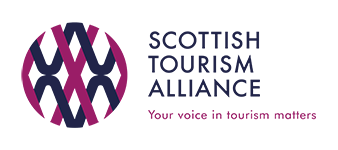Decoding Digital Marketing: Essential Terms To Know
In today’s digital age, new words, phrases and acronyms seem to pop up almost every day. This can leave people feeling left behind and completely confused when learning about digital marketing. Understanding key terms and concepts is essential for success in the online realm. So, let’s dive into some crucial digital marketing terms that every blogger, digital marketer, communicator and content creator should know to thrive in the competitive online landscape.
SERP (Search Engine Results Page)
SERP refers to the page displayed by search engines in response to a user’s query. Understanding SERP features such as featured snippets, knowledge panels, and local packs is crucial for optimising website content. This will help you to appear prominently in search results. By understanding how to get content onto a potential customer’s SERP, you can aim to increase sales.

SEO (Search Engine Optimisation)
SEO is the practice of optimising your blog content to rank higher in SERPs (see, you’re already getting the hang of this jargon!). One way to help with this is to use keywords – these are the phrases that people use to search online. By incorporating them in useful content, you can encourage more people to visit your site and attract more organic traffic from search engines like Google.
We’ve spoken at length before at SEO and the basics always remain the same. If you create high-quality copy that is focused on your business – and provide it consistently – then you are over halfway to ensuring you’ll get good search results. If you would like help providing timely content for your website to help with SEO, then just give us at POSH a shout.
PPC (Pay-Per-Click)
PPC is a digital advertising model where advertisers pay a fee each time their ad is clicked. It’s found on Google Ads and Facebook Ads. PPC allows users to create targeted campaigns to promote their content and drive traffic to their websites. By bidding on keywords and demographics, digital marketers can reach their target audience effectively and track the performance of their ads in real-time. It is a good way to advertise as you only pay each time your advert is clicked on, as opposed to every time someone simply views your advert. This means that you only pay for times a potential customer clicks on your advert.
CTA (Call to Action)
A CTA is a prompt that encourages readers to take a specific action. This could be subscribing to a newsletter, downloading a resource, or making a purchase. It’s vital to include clear and compelling CTAs on your website. Content like blog posts can help drive conversions and engage your audience. Whether it’s a clickable button, an image or a text link, CTAs should be strategically placed throughout your blog to guide readers towards desired actions. For example, do you want your web visitors to book a stay at your hotel? Then ensure you have clear “Book Now” buttons on your site, especially at the end of blogs which tell them about your wonderful accommodation. Parliament House Hotel in Edinburgh has excellent CTAs throughout their site.
And if you want blog readers to find out more about you, then direct them to an about us page like this!

ROI (Return on Investment)
ROI measures the effectiveness of your digital marketing efforts. It compares the cost of investment to the resulting benefits or revenue generated. For websites, ROI can be tracked through various metrics such as website traffic, engagement rates, lead generation, and ultimately, conversion rates. By analysing ROI metrics, we can evaluate the success of digital marketing campaigns. This can help direct future strategies. Here at POSH we can do this analysing for you. Our keen eye, educated through hundreds of hours of studying spreadsheets, will be sure to help you get a solid ROI.
Bounce Rate
Bounce rate tells us the percentage of visitors who land on one webpage but then leave without interacting further. A high bounce rate is often a bad thing, especially for those in the hospitality profession. That’s because it means there’s a good chance that the user did not get what they wanted form your site, and so went to another one instead. If you are looking to bring customers to your business, you usually want to attract and keep them on your page until they purchase goods or services. Want to bring your bounce rate down and sales up? Speak to us at POSH and we can help.
In conclusion, understanding these types of phrases is only the beginning. Mastering the art of digital marketing is a long process, so why not let us join you on your journey and we can help your website really shine? Get in touch with Jenny today.








